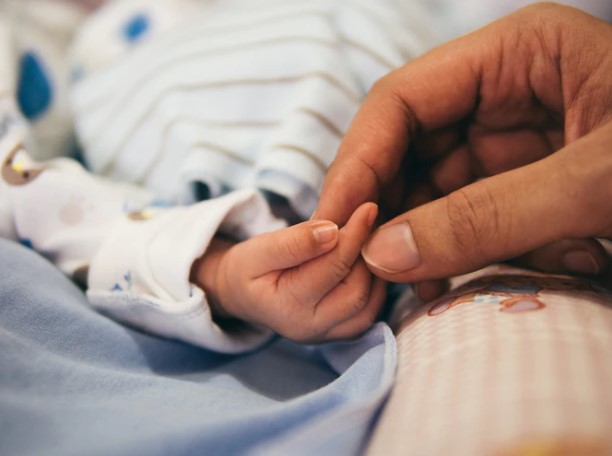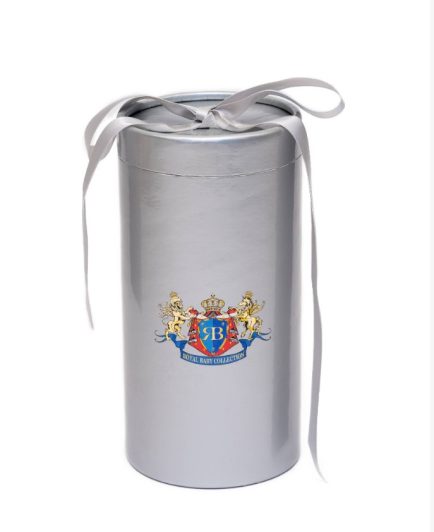If your baby is six months or younger, experts recommend that the best place for him to sleep is on his back in a cot or Moses basket in the same room as you. This applies to daytime naps as well as during the night. Even if you don’t plan to co-sleep with your baby regularly, there may be times when it’s easier to bring him into your bed to comfort or feed him. With that in mind, it’s a good idea for you and your partner to know when co-sleeping isn’t safe, as well as how to make sure your bedroom is set up for safe co-sleeping.
There are some circumstances in which you should never try to co-sleep with your baby, because of the increased risk of sudden infant death syndrome (SIDS). The most dangerous of these is falling asleep on a sofa or armchair with your baby, because of the increased risk of your baby overheating and suffocating. The risk to your baby is the same, whether it’s during the day or at night-time.
There are other factors which significantly increase the risk of SIDS. Don’t share a bed with your baby if:
- You or your partner have been drinking alcohol or have taken medication or drugs that make you drowsy.
- You or your partner smokes or uses e-cigarettes, even if you never smoke in bed or at home.
- Your baby is under three months old, was premature (born earlier than 37 weeks) or had a low birth weight (less than 2.5kg or 5.5lbs).
Alcohol or drugs may affect you or your partner’s memory, and you could forget that your baby is in your bed or on the sofa with you. You may sleep so soundly that you’re unaware you’ve rolled onto him or that he’s become trapped between you and the back of the sofa. For this same reason, experts suggest you shouldn’t co-sleep when you feel extremely tired. Some experts also recommend that you don’t co-sleep with your baby if he has just been discharged from the neonatal care unit.
If you’re breastfeeding your baby and none of these risk factors applies to you, it may be reassuring to know that co-sleeping with your baby shouldn’t significantly increase the risk of SIDS. It’s safer to breastfeed your baby in bed in these circumstances, than to breastfeed and then doze off with your baby on a sofa or armchair.
Sometimes, it can seem easier to share a bed with your baby, particularly if you’re breastfeeding or if your baby struggles to settle without you. But before you curl up with your baby, keep the following safety tips in mind.Never sleep on a sofa or armchair with your baby.
These are two of the most dangerous places that you could fall asleep with your baby. Your baby could become wedged in the cracks between sofa cushions or between you and the back or sides of the sofa or chair.Make sure your mattress is firm.
A soft or sagging mattress carries a higher risk of your baby suffocating or overheating. If your bed has a frame, a headboard, or is against a wall, make sure the mattress fits snugly. You don’t want to leave any gaps that your baby could wriggle into. Don’t co-sleep on a waterbed, air bed, bean bag or other saggy surface either. These are all too soft and waterbeds may have deep crevices around the frame where your baby could get trapped. Keep bedding light and minimal.
Keep bedding and pillows well away from your baby’s head, as this could cause him to be smothered or get too hot. Experts advise using light sheets and blankets rather than a duvet. If you do want to use a duvet, choose a light tog and keep it at your waist level, so it doesn’t cover your baby’s head. A well-fitted baby sleeping bag is a suitable alternative that can lessen this risk. Don’t let your baby sleep on a pillow, or put pillows either side of him. He may roll off, or be smothered in the folds of the pillow.
Keep your bed free from toys, bumpers, or extra bedding such as bed nests and sleep pods. If you co-sleep with your baby, he should be lying beside you on a firm, flat mattress. Keep your baby warm, not hot. Although co-sleeping raises your baby’s skin temperature, he should still be able to regulate his core temperature. Keeping his head uncovered and the bedding light will help him to do this. Pop your baby in his usual pyjamas and maybe a vest if it’s cold outside. As a general rule of thumb, if you’re a comfortable temperature, then your baby probably is, too. Sleep with your baby in the “C” position.
Lie on your side, facing your baby, with your body curled around him in a C-shape. Place your lower arm above your baby’s head and draw your knees up under his feet. This position helps to prevent you from rolling forwards or backwards and keeps pillows away from your baby’s head. If you’re breastfeeding, you’ll probably adopt this position instinctively, as it helps to have your baby lying level with your breasts so he can feed during the night. Don’t let your baby and toddler sleep next to each other.
You should only let your toddler sleep in the same bed as you and your baby if it is unavoidable. Your toddler won’t understand the risks, and could roll over on to your baby, or put an arm across his mouth or head. You or your partner should always sleep between the children if you’re all sharing a bed. Your toddler may find it hard to understand that you need to keep your attention focused on your baby when you’re in bed. If this is the case, it may be easier to persuade her to sleep in her own bed. If your toddler resists and night-times become a struggle, it will be safer to put your baby to sleep in a cot near you instead.
Never leave your baby alone in your bed. Make sure you or your partner is always in bed with your baby. Even if you’ve just popped out for five minutes, there’s a risk that your baby could fall off your bed or wriggle himself into difficulty. If neither of you can be with your baby, it may be better to put him in a safe place, such as a Moses basket or cot, while you’re out of the room.
If you have the space, a king-size bed should offer more than enough room for you, your partner and your baby. If this isn’t an option, and you and your partner are committed to co-sleeping, one of you may prefer to sleep elsewhere for a while to make extra room. Some parents prefer to put their mattress directly on the floor, especially when their baby starts to wriggle and roll around. If you like the idea of co-sleeping but are worried about the risks of sharing a bed with your baby, you could look into buying a bedside cot. This is a cot that can be securely attached to your own bed with one side removed. That way your baby is near you, but in a separate bed and you can still reach to comfort and feed him during the night. Another option is to put a normal cot right next to your bed.
There’s no one-size-fits-all model when it comes to sleeping arrangements for you and your baby. Some parents like to sleep with their babies, and some don’t. And some babies need a little more night-time comfort than others. As your baby grows, he may not want to sleep all night, every night, with you. With a bit of trial and error, you’ll eventually find a method that works for you, your partner, and your baby.
Original article: https://www.babycentre.co.uk/a558334/co-sleeping-and-safety#ixzz5ZR5qeHRW































Comments